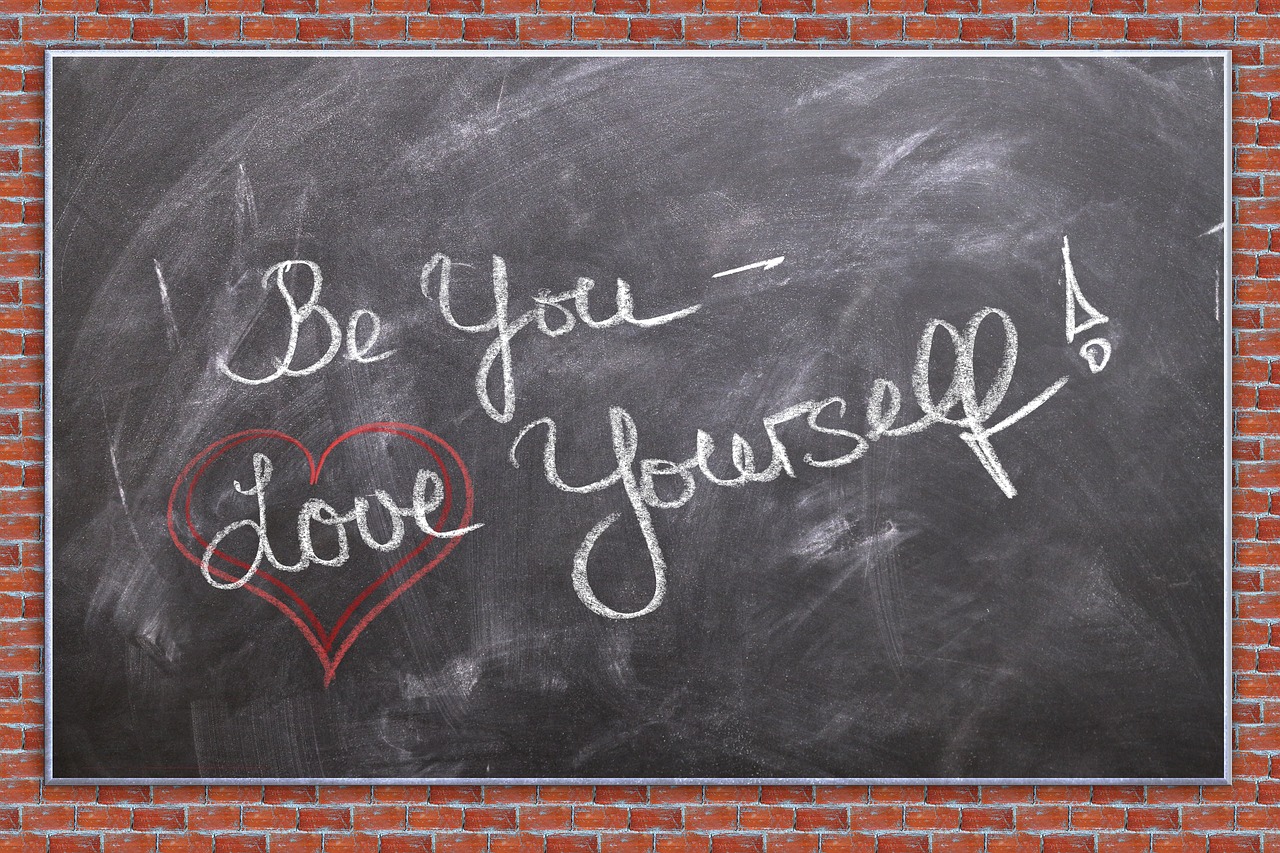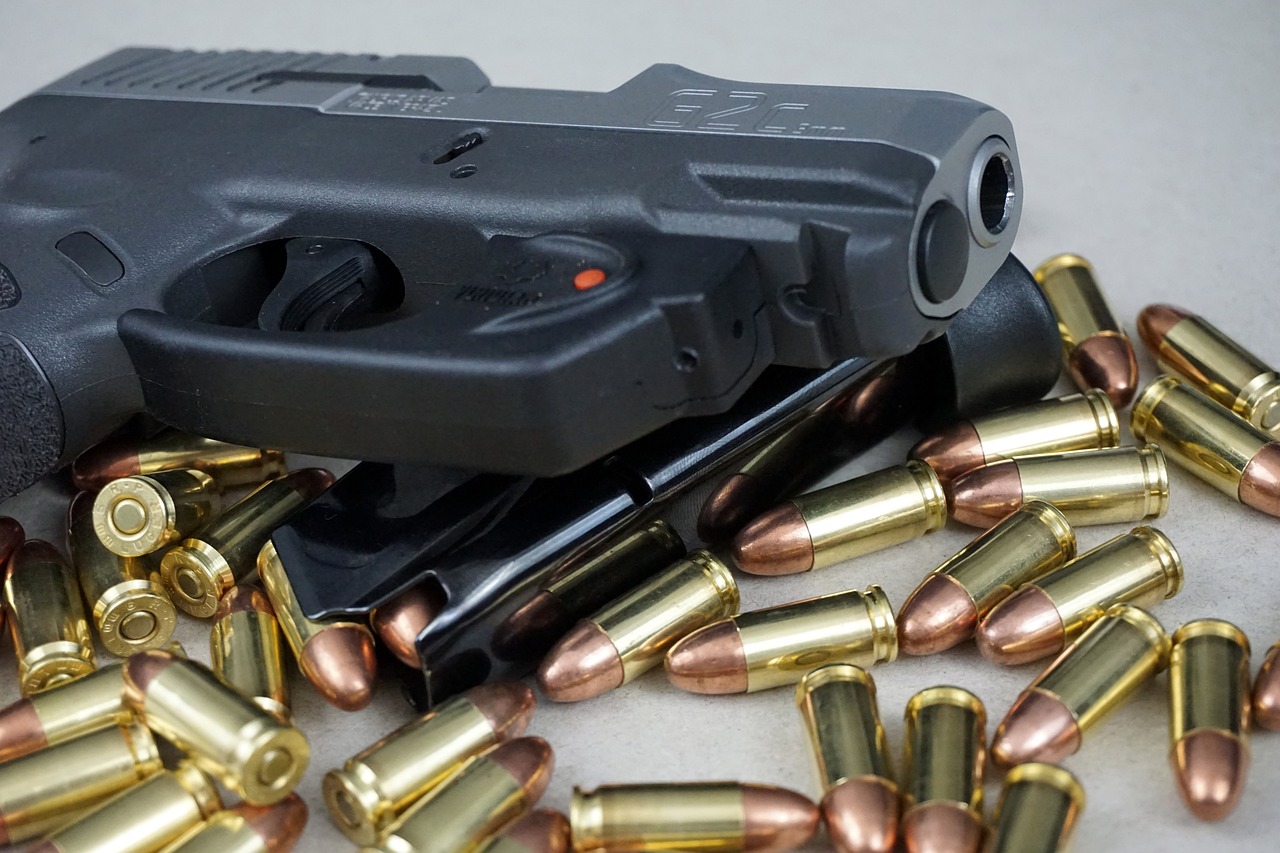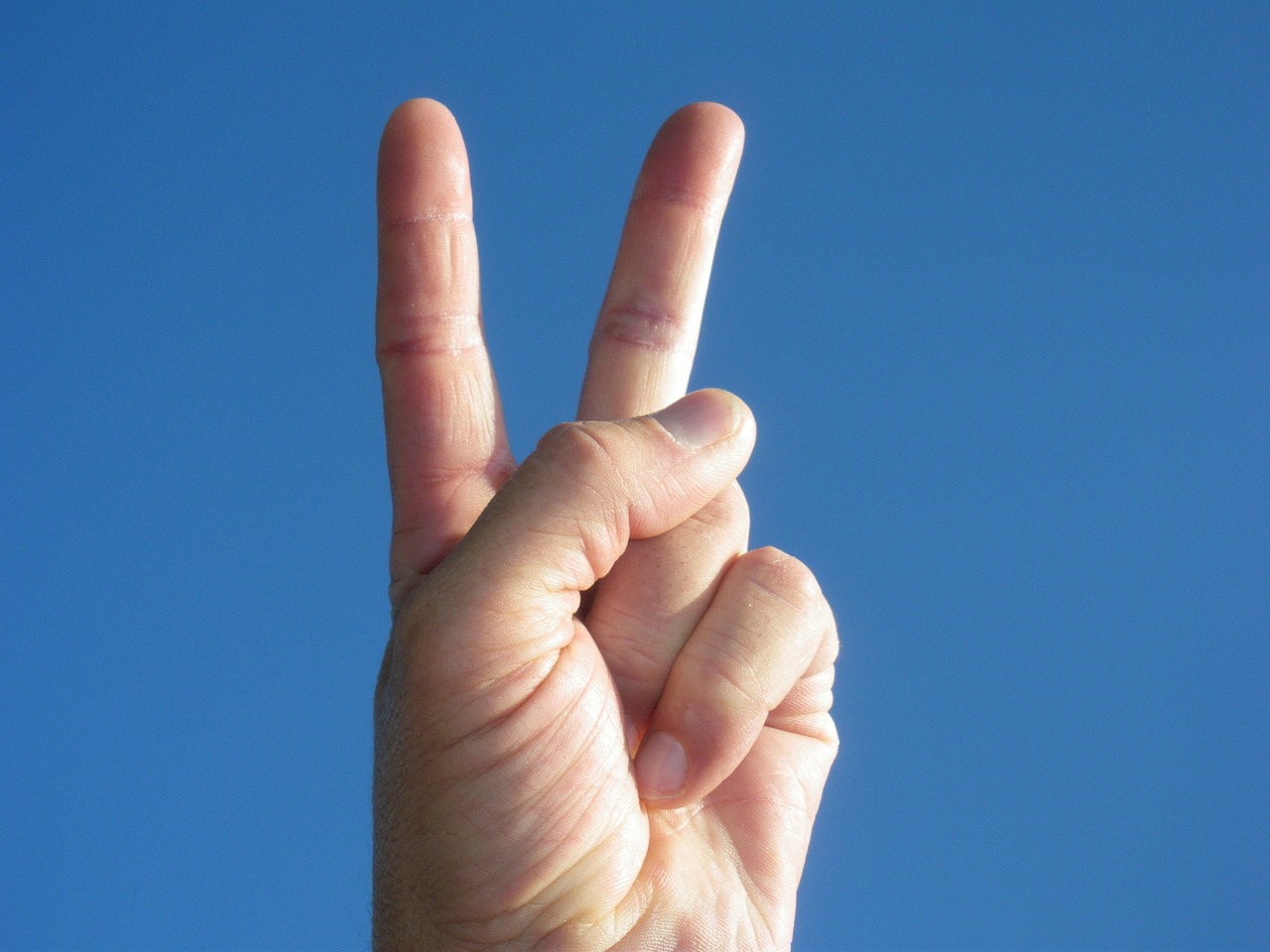Key Differences between Self-Defense Techniques for Men and Women
When it comes to self-defense, the strategies and techniques employed can vary significantly between men and women. This isn't just a matter of physical strength; it's a complex interplay of physical, psychological, and situational factors that shape how each gender approaches self-defense. Understanding these differences is crucial for anyone looking to enhance their personal safety and self-defense skills.
First and foremost, let's talk about physical strength considerations. Generally, men tend to have greater upper body strength, which can influence the types of techniques they might find most effective. For instance, a man might rely on powerful strikes or grappling techniques that leverage his strength. On the other hand, women often need to focus on techniques that utilize speed, agility, and precision, compensating for any physical disadvantages. This doesn’t mean women can’t learn powerful techniques; rather, they might adapt them to suit their unique strengths.
Moving on to psychological factors, the way men and women respond to threats can be quite different. Men may experience a fight response more readily, while women might lean towards flight or avoidance. This divergence can significantly impact training methods. For example, self-defense classes for women often emphasize situational awareness and de-escalation tactics, helping them develop a proactive approach to potential threats. Conversely, training for men might focus more on direct confrontation techniques.
The fear response is another critical aspect where differences emerge. Research shows that men and women may experience fear in varying ways during confrontations. While men might feel a surge of adrenaline that pushes them to act aggressively, women may experience a heightened sense of caution and anxiety. Recognizing these differences can lead to more effective self-defense training scenarios tailored specifically for each gender. For instance, women may benefit from role-playing exercises that simulate high-stress situations, allowing them to practice their responses in a controlled environment.
In terms of stress management techniques, both men and women can benefit from tailored strategies that enhance their confidence and effectiveness in self-defense situations. Techniques such as deep breathing, visualization, and mindfulness can be particularly helpful. For women, engaging in self-defense training can also serve as a form of empowerment, boosting their overall confidence and resilience. Men, on the other hand, might focus on channeling their adrenaline into focused energy during confrontations.
Developing a proactive mindset and situational awareness is essential for effective self-defense. Both men and women can cultivate these skills through practice and training. For instance, women can benefit from learning to trust their instincts and recognizing potential dangers in their environment, while men can focus on maintaining composure and assessing situations critically before reacting. This proactive approach not only enhances self-defense skills but also contributes to overall personal safety.
When it comes to training approaches, instructors need to adapt their teaching styles to cater to the unique needs of male and female students. For example, self-defense classes for women might place a stronger emphasis on escape techniques and situational awareness, while classes for men may focus more on striking and grappling techniques. Instructors should strive to create an inclusive environment that encourages participation and builds confidence for all students, regardless of gender.
Understanding the most common attack scenarios faced by men and women can inform the development of specific self-defense techniques tailored to each gender's experiences. For instance, men might be more likely to encounter aggressive confrontations in public spaces, while women may face threats in domestic situations. By recognizing these patterns, self-defense training can be more effectively designed to address the unique challenges faced by each gender.
Street encounters often present unique challenges for both genders. Men might find themselves in situations where they must defend against larger opponents, while women may face threats from strangers or known acquaintances. Understanding common tactics used in these situations, such as surprise attacks or intimidation, is crucial for developing effective counter-strategies. For example, women can learn to use their surroundings to their advantage, employing techniques like using a purse or bag as a barrier.
Domestic violence scenarios require specialized self-defense techniques. The dynamics involved can be complex, often including emotional manipulation and power dynamics. Preparing for such situations involves not only physical techniques but also understanding the psychological aspects at play. Self-defense training for women in these contexts might focus on escape strategies, recognizing warning signs, and building a support network.
- What are the best self-defense techniques for women? Techniques that emphasize escape, situational awareness, and using personal items as defensive tools are often recommended.
- How can men enhance their self-defense skills? Men can benefit from training that focuses on striking techniques, grappling, and maintaining situational awareness during confrontations.
- Are self-defense classes effective? Yes, self-defense classes can significantly boost confidence and teach practical skills for handling dangerous situations.

Physical Strength Considerations
When it comes to self-defense, one of the most significant factors that come into play is physical strength. Generally speaking, men tend to have greater muscle mass and physical power compared to women. This difference is not just a matter of raw strength; it influences the choice of self-defense techniques that are most effective for each gender. For instance, techniques that rely heavily on brute force may be more suitable for men, while women might benefit from strategies that emphasize agility, speed, and leverage.
Understanding these differences is crucial for anyone looking to develop effective self-defense skills. For women, this might mean focusing on techniques that allow them to use their opponent's strength against them, such as joint locks or throws. On the other hand, men may find it advantageous to incorporate techniques that utilize their strength to subdue an attacker quickly. This is not to say that one gender is at a disadvantage; rather, it's about leveraging individual strengths to create an effective self-defense strategy.
To illustrate this point, consider the following table that compares some common self-defense techniques with their effectiveness based on physical strength:
| Technique | Best Suited For | Key Factors |
|---|---|---|
| Joint Locks | Women | Leverage over strength |
| Strikes (Punches/Kicks) | Men | Power and speed |
| Escape Techniques | Both | Agility and quick thinking |
| Ground Defense | Mixed | Technique over strength |
Another important aspect to consider is the psychological impact of physical strength differences. In a self-defense situation, a man may feel more confident simply due to his physicality, which can affect his decision-making. Conversely, a woman may need to cultivate a stronger mental approach to overcome any feelings of vulnerability. This can be achieved through training that emphasizes not just physical techniques, but also mental preparedness and situational awareness.
In conclusion, recognizing and understanding the physical strength considerations in self-defense is essential for both men and women. By focusing on their unique strengths and weaknesses, individuals can tailor their training to be more effective in real-life scenarios. Whether it's through leveraging an opponent's strength or enhancing personal agility and speed, the goal remains the same: to empower oneself and be prepared for any situation.

Psychological Factors
When it comes to self-defense, the at play can be just as crucial as the physical techniques employed. Understanding how men and women react differently in high-stress situations can significantly influence the effectiveness of self-defense strategies. For instance, while men might instinctively adopt a more aggressive stance during a confrontation, women often exhibit a heightened awareness of their surroundings and may prioritize escape over confrontation. This difference in instinctual response can shape the training and techniques that are taught to each gender.
Moreover, the concept of the fear response plays a pivotal role in self-defense. Men and women often experience fear differently; men may feel compelled to confront the threat head-on, while women might be more inclined to assess the situation and look for an exit. This distinction is not merely anecdotal; studies have shown that women are more likely to experience a fight-or-flight response that leans towards flight, which can be a vital consideration when developing self-defense techniques. By recognizing these differences, instructors can tailor their training programs to better prepare individuals for real-life scenarios.
The fear response can vary significantly between genders, and acknowledging these variations can lead to more effective self-defense training. For example, men might channel their fear into aggression or assertiveness, while women may experience a more pronounced physiological response, such as increased heart rate and heightened anxiety. This can lead to a freeze response, where the individual feels paralyzed and unable to act. Therefore, understanding these psychological differences can aid in creating realistic training scenarios that help both men and women practice managing their fear in a controlled environment.
Different stress management techniques can be beneficial for men and women in self-defense situations. For men, techniques that focus on aggression release, such as physical conditioning or combat sports, might be more effective. In contrast, women may benefit from mindfulness practices, such as meditation or breathing exercises, to help manage anxiety and maintain composure during high-stress situations. Tailoring these strategies can improve confidence and effectiveness, allowing individuals to respond more adeptly when faced with a threat.
Developing a proactive mindset and situational awareness is crucial for effective self-defense. This means training oneself to be aware of surroundings and potential threats before they escalate. Both men and women can cultivate these skills through various methods, such as role-playing scenarios, situational drills, and even engaging in community awareness programs. A strong mindset can empower individuals to trust their instincts and react appropriately, whether that means defending themselves or seeking a safe escape. The goal is to foster a sense of empowerment and readiness, equipping both genders with the mental tools they need to navigate potentially dangerous situations.
In conclusion, psychological factors play a significant role in self-defense, influencing how individuals perceive and respond to threats. By understanding the differences in fear responses, stress management techniques, and the importance of mindset and awareness, self-defense training can be tailored to meet the unique needs of men and women, ultimately enhancing their ability to protect themselves in various situations.
- What are the key psychological differences in self-defense between men and women?
Men often respond with aggression, while women may prioritize escape and awareness. - How can fear responses affect self-defense training?
Understanding fear responses helps tailor training to address specific reactions in confrontational situations. - What stress management techniques are effective for self-defense?
Men might benefit from physical conditioning, while women may find mindfulness and breathing exercises helpful. - Why is situational awareness important in self-defense?
It empowers individuals to recognize threats early and respond appropriately, enhancing their overall safety.

Fear Response
The is an instinctive reaction that can manifest differently in men and women during threatening situations. When faced with danger, our bodies react in a variety of ways—some of which can be beneficial, while others may hinder our ability to defend ourselves effectively. Understanding these differences is crucial for developing self-defense strategies that work for everyone. For example, men often exhibit a "fight or flight" response, where adrenaline surges through their bodies, preparing them for physical confrontation or quick escape. This physiological reaction is often accompanied by heightened aggression, which can be advantageous in a physical altercation.
On the other hand, women may experience a more complex emotional response. While they too may feel the adrenaline rush, their initial reaction could lean towards fear and anxiety, which can lead to a freeze response rather than an immediate fight or flight. This difference in response can be traced back to social conditioning and biological factors. Women are often socialized to be more nurturing and less confrontational, which can affect how they react under duress. It’s essential to recognize that these responses are not weaknesses; rather, they are different survival mechanisms shaped by both biology and social context.
To illustrate the differences in fear responses, consider the following table:
| Aspect | Men | Women |
|---|---|---|
| Initial Reaction | Fight or Flight | Freeze or Flight |
| Emotional Response | Aggression | Fear and Anxiety |
| Physical Response | Adrenaline Surge | Adrenaline Surge |
| Social Conditioning | Encouraged to confront | Encouraged to avoid conflict |
By acknowledging these differences, self-defense training can be tailored to address the specific needs and responses of each gender. For instance, training programs can incorporate techniques to help women manage their fear and anxiety, transforming these feelings into a source of strength. Techniques such as breathing exercises and visualization can empower women to regain control over their emotional responses, allowing them to react more decisively when confronted with danger.
Moreover, understanding the fear response can also improve situational awareness. Both men and women can benefit from training that emphasizes the importance of recognizing potential threats before they escalate. Developing a proactive mindset enables individuals to assess their surroundings and make informed decisions, ultimately enhancing their self-defense capabilities.
In conclusion, the fear response is a fundamental aspect of self-defense that varies between genders. By recognizing and addressing these differences, we can create more effective training programs that equip both men and women with the skills and confidence needed to protect themselves in any situation.

Stress Management Techniques
When it comes to self-defense, managing stress is not just an afterthought; it's a crucial element that can determine the outcome of a confrontation. Both men and women experience stress differently, and understanding these variances can empower individuals to develop effective strategies tailored to their unique responses. For instance, while some may find that physical exertion—like a quick jog or an intense workout—helps alleviate stress, others may benefit more from mental techniques such as meditation or deep-breathing exercises. The key is to find what resonates personally and to practice it regularly.
One effective way to manage stress is through mindfulness meditation. This technique encourages individuals to focus on the present moment, which can help in reducing anxiety and increasing awareness. By dedicating just a few minutes each day to mindfulness, one can create a mental buffer against the chaos of a potential confrontation. Imagine standing in a crowded place, feeling the tension rise. Instead of succumbing to panic, a few deep breaths and a moment of focused awareness can ground you, allowing for clearer thinking and better decision-making.
Another valuable approach is visualization techniques. This involves mentally rehearsing scenarios where you might need to defend yourself. By visualizing not just the attack but also your response, you can reduce the fear associated with these situations. Picture yourself confidently executing a defensive maneuver, feeling empowered rather than vulnerable. This mental rehearsal can make a significant difference when faced with real-life challenges.
Additionally, engaging in regular physical activity can serve as both a stress reliever and a confidence booster. Whether it's joining a martial arts class, going for a run, or hitting the gym, physical fitness plays a vital role in how we handle stress. It not only enhances strength but also releases endorphins, the body's natural mood lifters. This dual benefit can provide an edge in self-defense situations, where both physical and mental resilience are tested.
Lastly, social support cannot be overlooked. Surrounding yourself with friends and loved ones who understand your concerns and can offer encouragement is invaluable. Having a support system helps mitigate feelings of isolation and fear, providing a safe space to discuss experiences and share coping strategies. Whether it's through group classes or informal meet-ups, connecting with others can foster a sense of community and shared learning.
In conclusion, effective stress management techniques are essential for both men and women in self-defense scenarios. By incorporating mindfulness, visualization, physical fitness, and social support into their routines, individuals can enhance their confidence and readiness to face potential threats. Remember, the aim is not just to react but to respond with clarity and strength, ensuring safety in any situation.
- What are some quick stress relief techniques I can use before a self-defense class?
Deep breathing exercises and quick stretches can be very effective. Taking a moment to focus on your breath can help calm your nerves.
- How can visualization improve my self-defense skills?
By mentally rehearsing scenarios, you can prepare yourself to respond instinctively in real-life situations, reducing panic and hesitation.
- Is physical fitness necessary for self-defense?
While not mandatory, being physically fit enhances your ability to defend yourself and boosts your confidence.
- How can I find a supportive community for self-defense training?
Look for local classes, workshops, or online forums where you can connect with others interested in self-defense.

Mindset and Awareness
When it comes to self-defense, mindset and awareness are not just buzzwords; they are crucial elements that can significantly impact your safety. Imagine walking down a street, and you spot a group of people acting suspiciously. Your ability to assess the situation and respond appropriately can make the difference between a safe passage and a potential confrontation. This is where the importance of awareness comes into play. It’s about being in tune with your surroundings, noticing the little details that others might overlook, and understanding how your environment can affect your safety.
Mindset is equally important. It’s not just about being physically prepared; it’s about having the mental fortitude to react effectively when faced with danger. A proactive mindset means you’re not just waiting for something to happen; you’re actively looking for ways to avoid potential threats. This might involve changing your route, keeping your phone handy, or even practicing assertive body language. Remember, confidence can be a deterrent in itself; an attacker often looks for easy targets, and if you project strength and awareness, you may be less likely to attract unwanted attention.
To cultivate a strong mindset and awareness, consider the following strategies:
- Practice Situational Awareness: Regularly assess your environment. What’s happening around you? Who is nearby? Are there any potential escape routes?
- Visualize Scenarios: Mentally rehearsing how you would respond to various situations can prepare you for real-life encounters. Imagine walking into a crowded place and identifying exits or potential threats.
- Stay Informed: Knowledge is power. Understanding common self-defense techniques and the psychology behind attacks can enhance your readiness.
Moreover, engaging in self-defense training can also improve your mindset and awareness. Many classes emphasize not just physical techniques but also how to read body language and assess threats. Instructors often create scenarios that mimic real-life situations, allowing students to practice their responses in a controlled environment. This hands-on experience can build confidence and enhance your ability to stay calm under pressure.
Ultimately, developing a strong mindset and awareness is about empowerment. It’s about taking control of your safety and understanding that you have the tools to protect yourself. Just like a soldier prepares for battle, you too can prepare for potential encounters by honing your mental skills and staying alert. In doing so, you’ll not only increase your chances of avoiding dangerous situations but also equip yourself with the confidence to handle them should they arise.
Q: How can I improve my situational awareness?
A: Regularly practice being observant in your daily life. Look for details in your environment, such as exits, people around you, and any unusual behavior. Consider enrolling in self-defense classes that focus on awareness training.
Q: What mindset should I adopt for self-defense?
A: Adopt a proactive mindset. Be aware of your surroundings and trust your instincts. If something feels off, take action to remove yourself from the situation. Confidence and assertiveness can deter potential threats.
Q: Can self-defense training help with mental preparedness?
A: Absolutely! Self-defense training not only teaches physical techniques but also enhances mental preparedness. It helps you develop strategies for various situations, boosting your confidence and response time during a real encounter.

Training Approaches
When it comes to self-defense training, the approaches for men and women can differ significantly, not just in technique but also in methodology. Instructors should recognize these differences and adapt their teaching styles accordingly. For instance, while men might be more inclined to focus on brute strength and aggressive techniques, women may benefit more from strategies that emphasize agility, evasion, and using the environment to their advantage. This doesn't mean that women can't learn powerful strikes or holds, but rather that a balanced approach can enhance their effectiveness in real-world situations.
One of the key aspects of effective training is understanding the psychological readiness of students. Men often respond to training with a competitive mindset, aiming to improve their strength and combat skills. Women, on the other hand, might approach self-defense with a focus on personal safety and awareness. Therefore, training programs should incorporate elements that resonate with each gender's motivations. For example, instructors can introduce scenarios that simulate real-life situations, allowing both men and women to practice their responses in a controlled environment.
Moreover, the instructor's role is crucial in shaping the training experience. Instructors should foster an inclusive atmosphere where both men and women feel comfortable expressing their concerns and preferences. This can be achieved through open discussions about the different challenges each gender faces in self-defense situations. Acknowledging these differences can help tailor the curriculum to better meet the needs of all students.
In practical terms, training sessions can be structured to include a variety of techniques that cater to both physical strength and strategic thinking. For example, a well-rounded curriculum might include:
- Striking Techniques: Teaching both genders how to deliver powerful strikes while also focusing on precision and timing.
- Escape Maneuvers: Emphasizing the importance of evasion and escape, especially for women who may find themselves in compromising situations.
- Situational Awareness: Training students to recognize potential threats and respond appropriately, regardless of gender.
Additionally, using partner drills can be beneficial for developing skills in a realistic setting. These drills allow students to practice techniques against resisting opponents, which can help build confidence and adaptability. Instructors should encourage students to switch partners frequently, as this can expose them to different body types and combat styles, further enhancing their skill set.
Ultimately, the goal of self-defense training should be to empower individuals, regardless of gender, to feel confident and capable in protecting themselves. By recognizing and addressing the unique needs of male and female students, instructors can create a more effective and inclusive training environment. This tailored approach not only improves skill acquisition but also fosters a sense of community among participants, making self-defense training a collaborative and supportive experience.
- What are the best self-defense techniques for beginners? Beginners should focus on basic striking techniques, escape maneuvers, and situational awareness to build a strong foundation.
- Can women effectively use strength-based techniques? Yes, while women may not have the same physical strength as men, they can still learn and apply strength-based techniques effectively with proper training.
- How can I find a self-defense class that suits my needs? Look for classes that emphasize inclusivity and offer a variety of techniques tailored to different skill levels and genders.

Common Attack Scenarios
Understanding the most common attack scenarios faced by men and women is crucial for developing effective self-defense techniques. Each gender often encounters different types of threats based on various factors such as location, social dynamics, and even psychological aspects. By analyzing these scenarios, we can tailor self-defense strategies that resonate with the unique experiences of both men and women.
One of the most prevalent attack scenarios is street encounters. These situations can arise unexpectedly and may involve a range of assailants, from opportunistic thieves to more aggressive attackers. Men often find themselves in confrontations that escalate quickly due to their natural inclination to assert dominance. Women, on the other hand, may face threats that are more predatory in nature, often involving stalkers or individuals who exploit perceived vulnerabilities. Recognizing the differences in these encounters can significantly influence the choice of self-defense techniques.
In street encounters, it's essential to remain aware of your surroundings. Here are some common tactics used by attackers:
- Ambush Tactics: Attackers may strike from behind or in poorly lit areas.
- Distraction Techniques: Some assailants may create a diversion to catch their victims off guard.
- Group Attacks: Often, multiple attackers can increase the likelihood of success in overpowering a victim.
Each of these tactics requires a different response. For instance, if someone attempts to ambush you, maintaining situational awareness and having a solid escape plan can be life-saving. Conversely, if faced with a distraction, staying calm and focused is key to assessing the situation and reacting appropriately.
Another critical area of concern is domestic situations. Unfortunately, many individuals, especially women, find themselves in abusive relationships where the threat of violence looms large. These scenarios often involve a complex web of emotional and psychological manipulation, making them particularly challenging to navigate. Understanding the dynamics of domestic violence is essential for developing effective self-defense strategies.
In domestic situations, the attacker may be someone the victim knows well, which can complicate the response. The fear of escalation or retaliation often keeps victims from seeking help or defending themselves. Here are some important factors to consider:
- Emotional Manipulation: Abusers often use emotional tactics to control their victims.
- Isolation: Victims may be cut off from friends and family, making it harder to seek support.
- Cycle of Violence: Understanding the cyclical nature of abuse can help in planning effective escape strategies.
Preparing for domestic violence scenarios requires a different mindset. It's vital to have a safety plan in place, including knowing where to go and who to contact in case of an emergency. Training for these specific situations can empower individuals to break free from the cycle of abuse and reclaim their autonomy.
In conclusion, recognizing and understanding common attack scenarios is the first step toward effective self-defense. By tailoring techniques to address the specific challenges faced by men and women, we can enhance personal safety and confidence. Whether navigating the unpredictable nature of street encounters or the complex dynamics of domestic situations, being prepared is the key to survival.
Q: What should I do if I feel threatened on the street?
A: Stay aware of your surroundings, trust your instincts, and have a plan for escape. If possible, seek help from bystanders or move towards well-lit areas.
Q: How can I prepare for domestic violence situations?
A: Create a safety plan, identify safe locations, and establish a support network. Consider seeking professional help or self-defense training tailored to these scenarios.
Q: Are self-defense techniques the same for men and women?
A: While some techniques may overlap, many self-defense strategies should be tailored to address the unique physical and psychological challenges faced by each gender.

Street Encounters
Street encounters can be daunting, often filled with unpredictability and potential danger. It's a reality that both men and women may face, but the way they approach these situations can differ significantly. Understanding the unique challenges each gender encounters is key to developing effective self-defense strategies. For instance, men might often feel pressured to confront an aggressor directly, relying on their physical strength, while women might be more inclined to look for ways to evade or de-escalate the situation. This difference in approach can be attributed to various factors, including societal expectations and personal experiences.
When a confrontation arises on the street, it's essential to recognize the common tactics that attackers may use. These can range from verbal intimidation to physical aggression. For example, an attacker might attempt to corner their target, creating a sense of helplessness. In such scenarios, awareness of one's surroundings plays a crucial role. It's not just about being physically prepared; it's also about being mentally agile and aware of potential escape routes or safe havens nearby. Here are some common tactics to be aware of:
- Verbal Aggression: Often used to intimidate and provoke a reaction.
- Physical Blockades: Aggressors may try to physically block your path to limit your options.
- Group Dynamics: Attackers may use numbers to intimidate, making it essential to stay vigilant.
Training for street encounters should involve role-playing scenarios that mimic real-life situations. This not only helps in practicing physical techniques but also aids in developing quick decision-making skills. For instance, a self-defense class might simulate a sudden approach by an aggressor, allowing participants to practice various responses—whether that’s using verbal de-escalation, employing defensive maneuvers, or finding an escape route.
Moreover, the psychological aspect of street encounters cannot be overlooked. The adrenaline rush and fear can cloud judgment, making it crucial to practice stress management techniques. Techniques such as deep breathing, visualization, and even mindfulness can help maintain composure during a confrontation. When the mind remains calm, the body can respond more effectively, whether that means standing your ground or making a swift exit.
In conclusion, street encounters require a multifaceted approach to self-defense. By understanding the tactics used by aggressors, honing physical skills, and preparing mentally, both men and women can enhance their readiness for these unpredictable situations. Remember, the goal of self-defense is not just to fight back but to protect oneself and escape safely.
Q: What should I do if I feel threatened on the street?
A: Trust your instincts. If you feel unsafe, seek help from nearby individuals or move to a public area. It's important to remain aware of your surroundings and have a plan in mind.
Q: Are self-defense classes effective for everyone?
A: Yes, self-defense classes can be beneficial for anyone, regardless of gender. They teach valuable skills and build confidence, which are crucial in handling potential threats.
Q: How can I improve my situational awareness?
A: Practice being mindful of your surroundings. This includes noticing exits, people nearby, and any potential hazards. Engaging in activities that require focus, like martial arts or even simple exercises like walking in a busy area, can help sharpen your awareness.

Domestic Situations
When it comes to self-defense, present a unique set of challenges that can differ significantly from public confrontations. Often, these scenarios occur in familiar environments where emotional ties complicate the dynamics of confrontation. It's essential to recognize that domestic violence can happen to anyone, regardless of gender, but the strategies and techniques employed in self-defense must be tailored to the specific circumstances and the individuals involved.
In many cases, the aggressor may be someone known to the victim, which can lead to a complex web of emotions such as fear, love, and confusion. This emotional turmoil can hinder a person's ability to react effectively during a crisis. Therefore, understanding the situation is key. For instance, victims may hesitate to defend themselves against a partner due to fear of escalation or retaliation. This is why training for domestic situations should incorporate not only physical techniques but also emotional readiness and strategic thinking.
Some effective strategies for self-defense in domestic situations include:
- Establishing clear boundaries with the aggressor.
- Practicing escape routes and safe spaces within the home.
- Utilizing verbal de-escalation techniques to diffuse tension.
Moreover, it’s crucial to recognize the signs of escalating violence. This awareness can empower individuals to take preventative measures before situations escalate into physical confrontations. Training should emphasize the importance of situational awareness, allowing individuals to identify potential threats early on. For example, if a partner displays controlling behavior or jealousy, these can be red flags indicating a need for intervention.
Additionally, self-defense training for domestic situations should cover the use of improvised weapons. Everyday items like keys, pens, or even household objects can serve as effective tools for self-defense when used appropriately. However, it’s vital to stress that the goal is not to engage in prolonged conflict but rather to create an opportunity to escape safely.
Ultimately, the most effective self-defense strategy in domestic situations is to develop a comprehensive safety plan. This plan can include:
- Identifying trusted friends or family members to confide in.
- Creating a code word or signal for help.
- Having a packed bag ready with essentials in case of an emergency.
In conclusion, addressing domestic situations in self-defense training requires a multifaceted approach that encompasses physical techniques, emotional intelligence, and practical safety measures. By preparing for these unique challenges, individuals can boost their confidence and readiness to protect themselves in potentially dangerous situations.
Q: What should I do if I feel threatened in a domestic situation?
A: It's important to trust your instincts. If you feel threatened, try to remove yourself from the situation if it's safe to do so. Have a plan in place for emergencies, including a safe place to go and people to contact for help.
Q: Can self-defense techniques be effective in domestic violence situations?
A: Yes, self-defense techniques can be effective, but they should be part of a broader safety plan. It's crucial to also focus on emotional readiness and understanding the dynamics of the situation.
Q: What resources are available for individuals facing domestic violence?
A: Many organizations offer support for victims of domestic violence, including hotlines, shelters, and counseling services. It's essential to reach out for help and know that you are not alone.
Frequently Asked Questions
- What are the key differences in self-defense techniques for men and women?
Self-defense techniques often differ between men and women due to variations in physical strength, psychological responses, and common attack scenarios. Men may rely more on physical strength, while women might focus on strategies that leverage their agility and awareness. Understanding these differences is crucial for effective self-defense training tailored to each gender's needs.
- How does physical strength impact self-defense training?
Physical strength plays a significant role in self-defense, as men typically have greater upper body strength. This can influence the types of techniques taught, as men might be encouraged to use more forceful maneuvers, while women might focus on techniques that help them escape or evade rather than confront directly. Leveraging one's own strengths and understanding limitations is vital for effective self-defense.
- What psychological factors should be considered in self-defense?
Psychological responses to confrontations can vary significantly between genders. For instance, men may exhibit a fight-or-flight response, while women might experience heightened anxiety. Recognizing these differences can help in developing tailored training programs that address specific fears and stress management techniques, enhancing confidence and effectiveness in real-life situations.
- How can stress management techniques improve self-defense skills?
Stress management techniques, such as deep breathing or visualization, can help individuals remain calm and focused during a confrontation. By tailoring these techniques to suit the unique psychological responses of men and women, self-defense training can improve overall readiness and effectiveness, enabling practitioners to act decisively under pressure.
- What common attack scenarios should self-defense training address?
Self-defense training should cover a variety of common attack scenarios, including street encounters and domestic situations. Understanding the dynamics of these situations allows individuals to develop specific strategies and techniques that are most relevant to their experiences, increasing their chances of successfully defending themselves.
- How can situational awareness enhance self-defense preparedness?
Situational awareness is crucial for self-defense, as it enables individuals to recognize potential threats before they escalate. By cultivating a proactive mindset and being aware of their surroundings, both men and women can better anticipate and react to dangerous situations, ultimately improving their self-defense readiness.
- Are there specific self-defense techniques recommended for women?
Yes, self-defense techniques for women often emphasize escape and evasion rather than confrontation. Techniques such as using leverage against an attacker, targeting vulnerable areas, and employing situational awareness are particularly effective. Training should also focus on building confidence and assertiveness, which can deter potential attackers.
- What role does training play in effective self-defense?
Training is essential for developing the skills and confidence needed for effective self-defense. Instructors can adapt their teaching methods to suit the different needs of male and female students, ensuring that each participant learns techniques that resonate with their strengths and experiences. Regular practice helps reinforce these skills, making them second nature in a crisis.



















